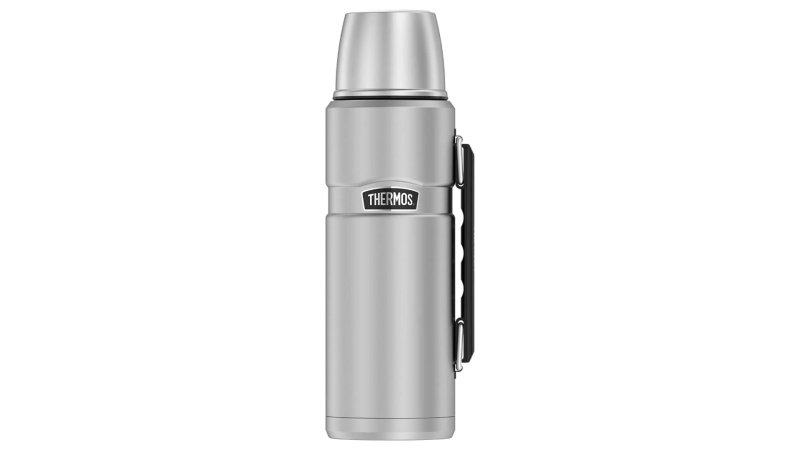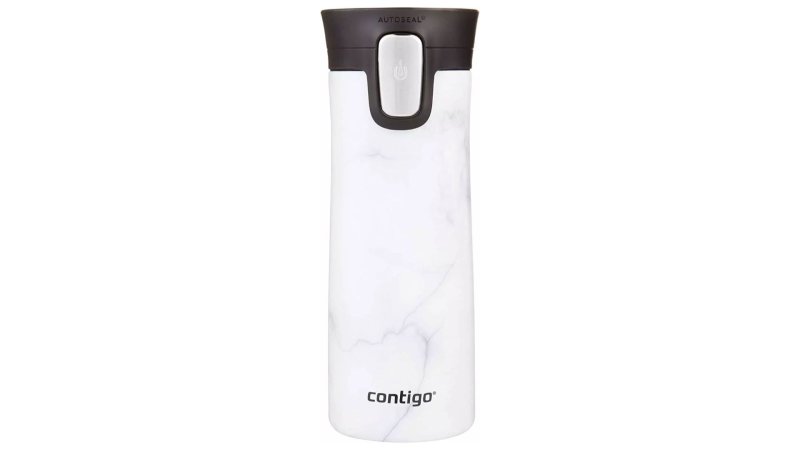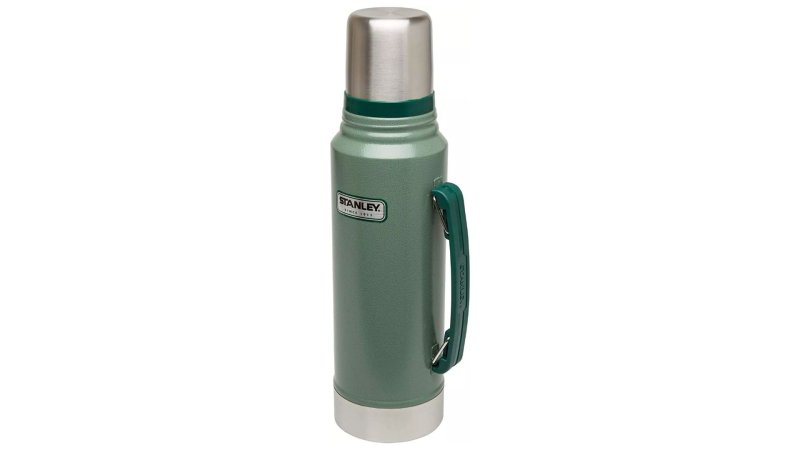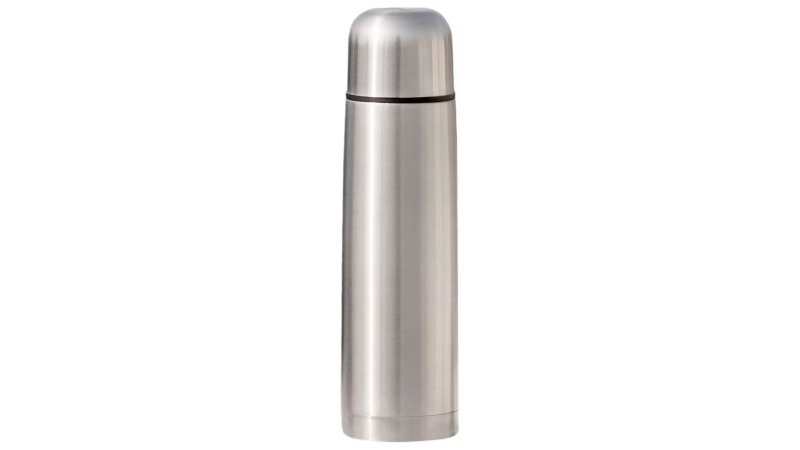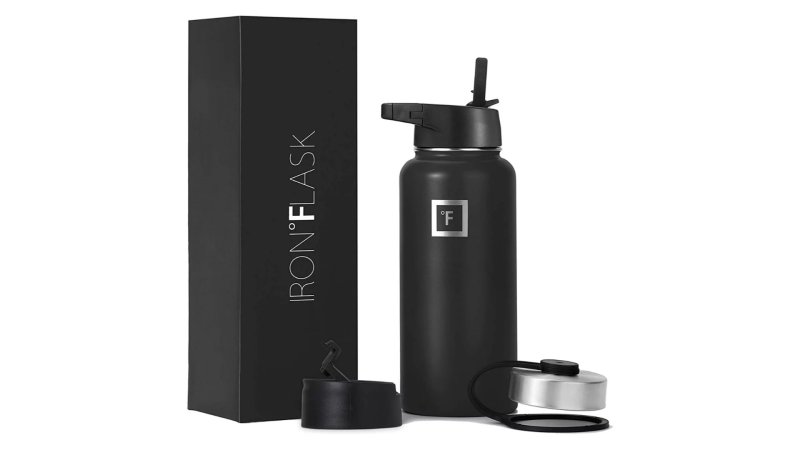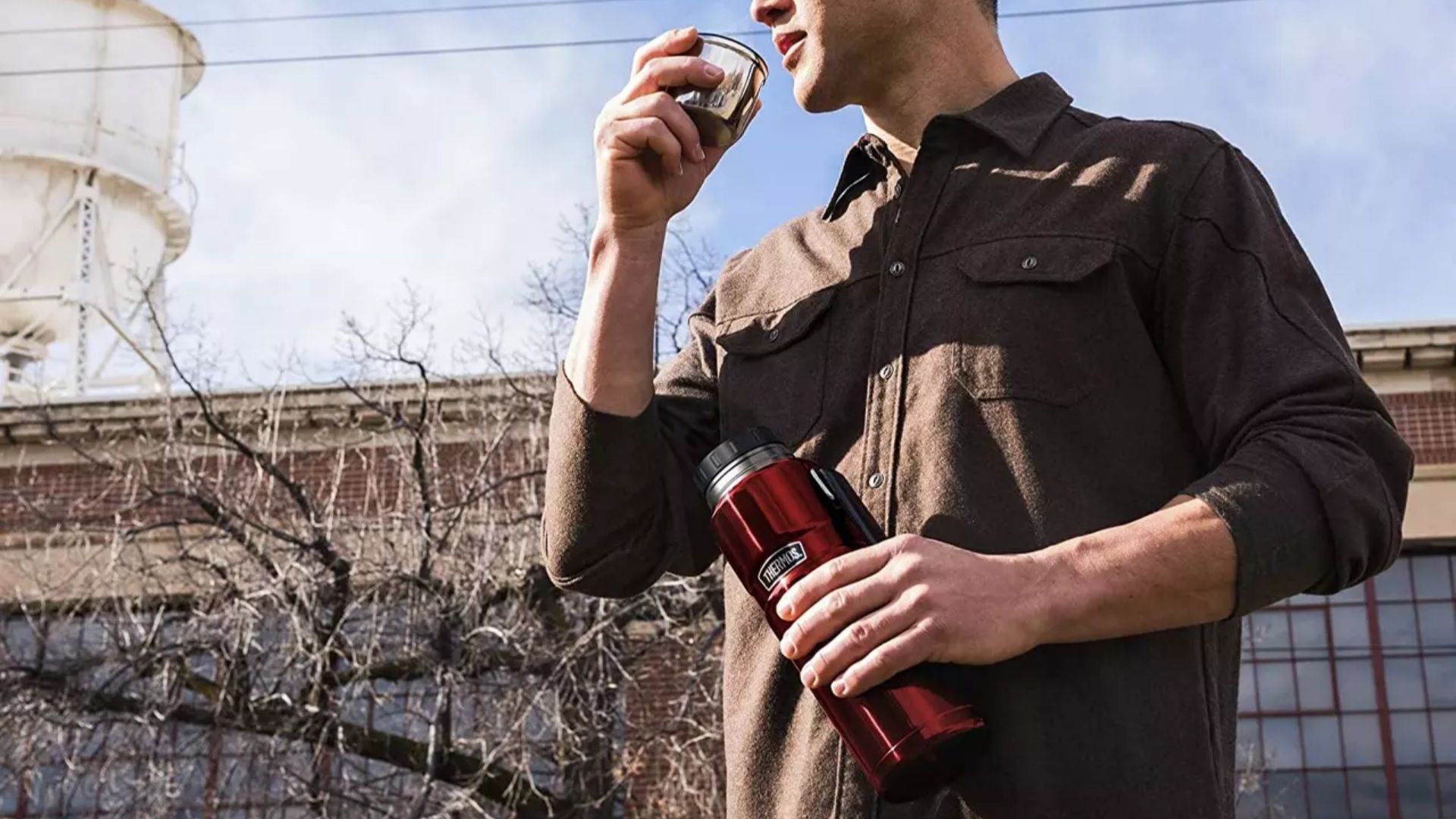

We may earn revenue from the products available on this page and participate in affiliate programs.
Though often associated with civilian wilderness excursions, thermoses actually have a proud military history dating back almost a century. The vacuum technology was developed by Scottish scientist Sir James Dewar who, instead of patenting the invention, enabled companies to advance it. Thermos, the namesake of this article, originated as three independent companies: one in England, one in Canada, and one in the United States. While the First World War marked a downturn in production, the company kicked back into gear in 1931. During World War II, roughly 98 percent of the American Thermos company’s products were put towards military usage. After that, the Thermoses became popular amongst military personnel and civilians alike for keeping food and drink warm both on the battlefield and at home.
In 1963, the phrase ‘thermos’ became a general term for all vacuum flasks, and to this day, they are found everywhere from lunch kits to the battlefield. But, without a standard-issue flask, it can be tricky to pin down a good option. To help, we’ve curated a list of the best thermoses on the market, along with some tips on finding the right fit.
Thermos stainless king beverage bottle
Contigo stainless steel travel mug
Stanley classic vacuum insulated bottle
Fijoo stainless steel coffee thermos
Iron flask sports water bottle
Related: 7 coffee accessories to help you brew like a barista
Why you should trust us
Over five years of product review experience has given me unique insight into tactical supplies, survival gear, and other essentials. Using my background in journalism and science education, I objectively assess products and have curated a reputation of reliability. By using personal experience paired with expert information, I supply reviews readers trust. My work can be found on Car Bibles, Narcity Media, and The Drive. Some of my recent pieces for Task and Purpose are reviews of tactical backpacks and gloves, as well as hydration packs.
Types of thermoses
- Multipurpose: The highest utility selections feature the ability to support both hot and cold contents. This type of thermos features substantial insulation inside of the shell. The vacuum technology can keep contents at the proper temperature for up to 24 hours. True multipurpose thermoses are able to hold both drinks and soup. While these thermoses are powerful, they tend to be bulkier and much heavier than their more basic counterparts.
- Hot content: The phrase thermos was adopted in reference to the Greek word for heat. Though originally the vacuum packaging was used for military-focused purposes, it became popular among civilians as a coffee thermos. These containers are slimmer than their multipurpose counterparts and are usually designed to fit beneath a coffee maker. A downside of this type is that they usually must be hand washed to prevent heat damage to the insulation.
- Cold content: Often used for exercise in hot climates, cold content thermoses are options that keep fluids cold longer than they retain heat. These are popular amongst runners or those undergoing outdoor training. It prevents the sun from heating up the fluid, making it easier to prevent heatstroke and dehydration. Most come with a carabiner to make it easier to hold the thermos while on the most. They are also fairly lightweight, adding ease to transportation.
Key features of thermoses
- Outer shell: The outer shell of the thermos is an important feature. Usually made of metal (mainly stainless steel), you can also find shells that come with a layer of plastic. The most important part of this component is remaining cool to the touch, regardless of the contents. The outer shell must also resist damage from impact in case the thermos is dropped.
- Insulation: Perhaps the most necessary feature of any thermos is the insulation. Found between the outer and the inner shell, it is the vacuum technology that offers thermoses the heat-control properties for which they are famed. Basically, the technology sucks the air out of the flask, preventing any convection and keeping the contents at the proper temperature. The higher the quality of the insulative layer, the better the thermal control you get.
- Lid: The lid of a thermos is essential to seal in the contents. Original thermoses used a twist-off cap which, in most cases, doubled as a serving dish for soup or coffee. The main lid is usually metal, though modern thermoses feature a second lid to create a firm seal and decrease the risk of thermal convection. Open lids are where most heat (or cold) has a chance to escape, so it’s important that the lid is user-friendly so you can efficiently recap the thermos.
- Handle: Most heavy-duty thermoses have handles at the side. It enables you to carry the thermos with ease, even letting you attach it to your other gear. The handle is usually made out of a rubber or polymer strap, attaching via metal to the outer shell. While helpful during transportation, handles are the parts most likely to get damaged during use. Check for a high-quality handle with secure attachments to mitigate this risk.
Benefits of thermoses
Unlike other bottles that lack a strong outer and inner shell, thermoses are tough against damage. Particularly those with a metal casing, thermoses won’t crack if they are dropped on hard ground. More importantly, thermoses are effective in all climates, functioning equally well whether you are exposed to the elements or drinking indoors. If you are battling the heat, the last thing you want is unseasonably warm fluid to rehydrate. A thermos preserves the cold of your drinks for as long as 24 hours, so you always have a pleasant drink on hand. Battling the cold is challenging, leading to the risk of hypothermia at worst and discomfort at best. Access to warm beverages is more than a comforting convenience, it is necessary to ensure health and safety in the field. Thermoses keep fluids warm for longer periods. The versatility of the thermos is highlighted by its proud military history and its continued use everywhere from camping to exercise.
Thermos pricing
Usually, thermoses that run under $20 are lighter-duty, working better for either hot or cold beverages. Often, these thermoses support smaller fluid quantities. Most heavy-duty, multipurpose thermoses run upwards of $20. You can almost certainly find a large-quantity thermos in this range that is both durable and effective.
How we chose our top picks
Thermoses have an impressive military history, with almost all of the Thermos products going towards the US World War II effort. Tracking the progress of thermoses over time (including the decision to call all similar vacuum flasks by the same name), we saw the evolution of these important items. Identifying the modern types that are most useful in today’s world, we shortlisted the top options. Factoring in user feedback, the repute of the manufacturer, and the cost, we finalized our list of the best thermoses around. The result is a vacuum flask that will get you through any situation.
Related: 5 barware items for crafting the perfect old fashioned
